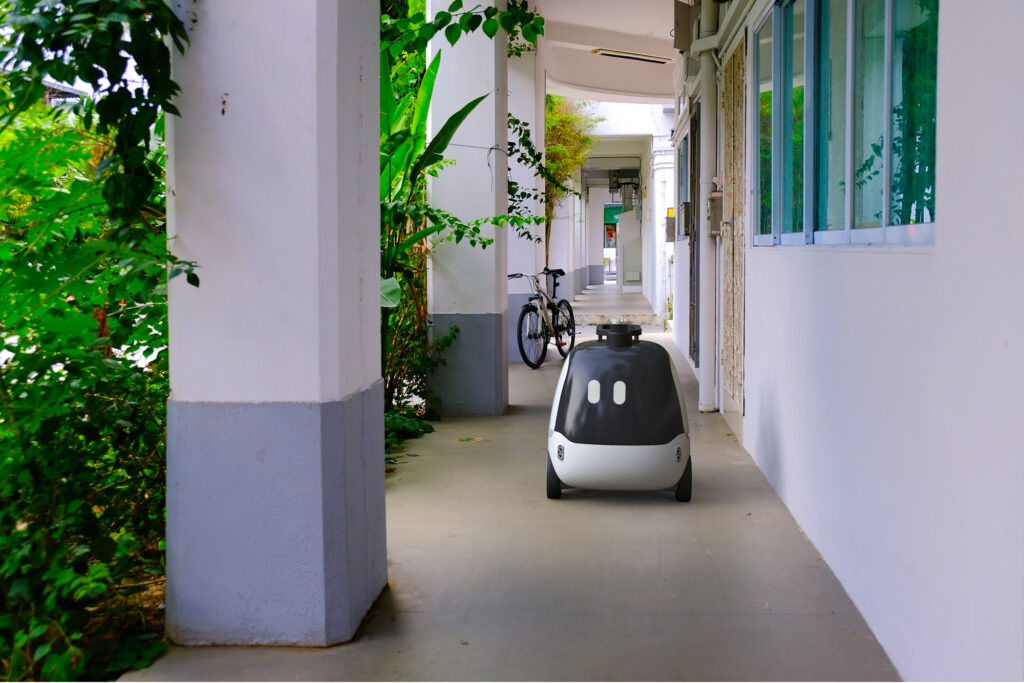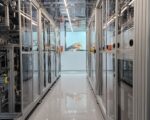
The rapid advancement of robotics technology is poised to transform the future of work in Southeast Asia (SEA).
As countries in the region strive to become more competitive in the global economy, robotics promises to enhance productivity, address labour shortages, and reshape industries from manufacturing to healthcare.
However, this transformation also spurs concerns such as job displacement and the need for a skilled workforce to operate alongside advanced technologies.
One of the leading pioneers in AI and robotics in SEA, dConstruct Technologies is an award-winning deep tech company headquartered in Singapore with a mission of making smarter robots for a better world.
We spoke with co-founder and CEO Lim Chinn Hwa and gathered his insightful takes on deploying robotics, and how SEA countries could leverage robotics to build a stronger and more resilient economy while promoting sustainable growth and inclusivity.
What inspired you to start an AI and robotics company?
One of the opportunities that came my way was when I met a group of very talented local engineers. They were figuring out how best to use their skills, and I didn’t want to see this group of young, talented people leave Singapore. It didn’t make sense to me for Singapore to lose this kind of talent, so I decided to embark on a journey with them. I provided them with seed funding and gave them the freedom to build what they wanted.
We had a mutual understanding that whatever we developed would be in the AI and robotics space—not because it was easy, but because it was difficult.
These people were incredibly talented, and they weren’t interested in doing the same old thing. They were technical “hunters,” always looking for their next big challenge. I saw them as people searching for their own technical Mount Everest.
We gave them the opportunity to explore, and within the first year, they felt like they had achieved something that most people couldn’t.

IMAGE: dConstruct Technologies
How does dConstruct differentiate itself in the AI and robotics space?
Our direction has been clear from the start—integrating AI with robotics. Robotics without AI is just automation, and AI without robotics is just software. We specialise in cyber-physical systems, bringing together metal, glass and plastic to create intelligent, autonomous machines.
One of our key breakthroughs is in navigation. We developed a technique that allows robots to perceive and move autonomously in real time using simultaneous localisation and mapping (SLAM) technology. Our approach is 10 times faster than conventional methods.
What are the challenges of deploying robotics in an urban environment like Singapore?
Urban environments present complex challenges because they are unstructured—robots must navigate around pedestrians, vehicles and changing lighting conditions.
Unlike autonomous vehicles that follow fixed road rules, robots in urban spaces must constantly adapt to unpredictable elements. Another challenge is integration with infrastructure, such as elevators and doors, which is essential for full autonomy.
As AI and robotics rapidly advance, what strategies can businesses and governments adopt to mitigate the risks of job displacement while ensuring innovation and talent development in this rapidly evolving field?
First of all, the AI and robotics industry is traditionally dominated by the Europeans, North Americans and the East Asians (China, Japan and South Korea). If SEA countries were able to build out their robotics industries over time, they would also be building very advanced technologies that are not just applicable for all walks of life but also produce derivatives and diversify into many other innovations, whether it’s for cars or buildings or for health.
SEA is not a powerhouse as far as robotics are concerned. It will be left behind if we choose to not do anything today. I think SEA mustn’t be left behind in terms of innovation and capabilities.
The Internet has already created the digital divide between those that can access it and those that cannot. AI and robotics will push that divide even further apart. So, how do we solve this problem?
We need to get AI and robotics into the curriculum of universities and technical colleges right away. The innovation and capability competency must first be in place. This is not a moral issue but a survival issue for all of us in SEA. Once this is in place, we can be sure that the divide against the rest of the world is not so big.
The second layer that comes after education and needs to come into place is how do we translate this into an economic differentiator. We then need to define or determine what kinds of jobs or tasks that people are less likely to take up, such as cleaning jobs.
In China and North America, when they build a factory, they build it with robots in mind, and they are willing to build it from scratch. This is not the case in SEA. The most suitable type of robots for SEA therefore will be humanoids that are able to move around in a human environment.
What are some of the critical skills that the SEA workforce must have in the age of AI and robotics?
I believe the most important skill today is the ability to embrace lifelong learning.
With AI and robotics advancing at an exponential pace, if we don’t adopt the mindset that we need to learn continuously, we’ll be in trouble.
You can’t just rely on your qualifications, like having a first-class degree in computer science from a reputable university and think that’s enough. It’s about having the right attitude. You need to commit to learning every day.
In today’s world, while technical expertise is crucial, soft skills, like communication, are equally important.
Take for instance, a company hired you based on your IQ, but you’ll only get promoted based on your EQ. It’s simple. You need to have a solid foundation of technical skills such as STEM, but once you have that, your success will depend on how well you can influence others.
It’s not about forcing your way through; it’s about guiding and persuading.
I believe if we want to create a successful society, we need to focus on cultivating the right business culture, as it has the biggest influence on shaping behaviour.
How do you balance automation with job preservation?
AI and robotics will inevitably change the job landscape, but the focus should be on transitioning workers to higher-value roles.
Many jobs that robots take over are ones that people don’t want to do—dirty, dangerous and demeaning tasks. By integrating robotics into industries, we can create more supervisory and technical roles while improving productivity.
How do you see robotics playing a larger role in the labour market especially in countries with low birth rates?
Singapore has a fertility rate of just 0.97, which is far below replacement level. Our aging population means there won’t be enough workers for many essential jobs.Robotics can help fill this gap, not by replacing workers but by augmenting them.
For instance, at Changi Airport, the average age of workers handling trolleys is 65. Instead of removing these jobs, robots can assist them, allowing workers to supervise multiple robot assistants rather than doing manual labour themselves.
What are the next steps for dConstruct?
We are working on scaling our solutions and refining our technologies to be more adaptable across various industries.
We also aim to influence public policy on robotics adoption in urban environments. The future of AI and robotics is not just about technology but about how societies adapt and integrate these advancements into daily life.

















